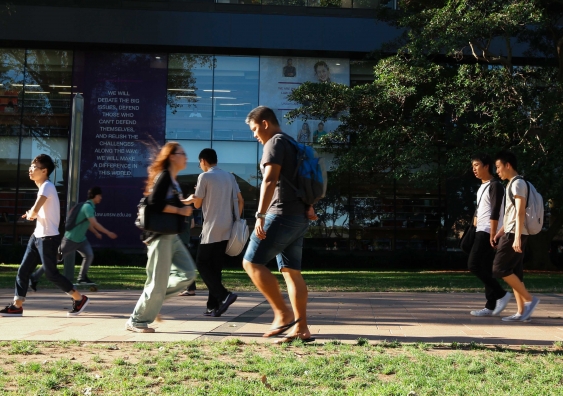When the world changes, we change with it – if we can.
But it’s not easy to turn an ocean liner. Higher education has become a massive enterprise weighed down by its history and increasingly complex network of ever more visibly vocal stakeholders.
But change we must if we are to keep in step with the modern world we see around us.
The big changes I’ve seen in education include a much broader cross-section of students aspiring to university, with many of them having to work while studying to support themselves; a change in staff profiles, with niches emerging for research specialists, education specialists, and casual and sessional staff increasingly contributing to teaching; and a healthy intrusion of the community and outside world into university thinking, with intense global competition looming over both students and staff as they strive to perform on the global stage.
The days of campuses being open for business just 24 weeks a year with students going home to help bring in the harvest while professors wrote their next book over the summer are long gone. Instead, the world expects changes that will provide opportunities for both our students and staff to excel.
With this in mind, the University of NSW spread out its academic calendar. Two 12-week semesters were stretched out into three 10-week terms, with an optional five-week summer session. The load was the same eight courses, but students could take up to three rather than four courses a session.
The teaching time per course was increased slightly – if you can do four courses in 12 weeks, then you can do three in nine, but you have 10 so there’s a week wriggle room. In fact, since students may do 3+3+2 they can ease off in one term, or they can accelerate (3+3+3), finishing their degree a term early or taking a term off for work experience or travel. In the modern age, work experience or travel can be as important to employment prospects as good marks.
Most important, perhaps, is that taking fewer subjects allows more students to work part-time and makes university more accessible.
In the new system, a student can take two subjects a term and retain full-time status and finish a typical bachelor’s degree in four years. Previously a student dropping back to two subjects a session would have taken six years to finish.
For staff, the extended teaching year means it now makes sense for the university to employ some previously sessional or casual academics on ongoing year-round contracts. This didn’t make sense when there were only 24 teaching weeks in the year. New education-focused roles have been embraced not only by casual staff but by continuing staff who love teaching. This is great for the students.
Teaching and research staff also benefit because they can take a term off teaching to focus on their research. If they take term one or three and the summer off, then they can really get into their research.
But introducing the calendar has provided other somewhat unexpected advantages. Since students take up to three rather than four subjects a session, we’ve seen 30 per cent fewer timetable clashes, students face 25 per cent fewer exams a session and scheduled contact hours are similarly reduced. Classroom space is freed up and we need to schedule fewer early-morning or evening lectures.
Sounds like paradise – it’s not quite that. The transition involved revising every single course and developing a new annual enrolment system. The exam marking time is shortened and intense. In fact, the whole thing is an exhilarating preparation for the modern world – sometimes it feels like we’re the university that never sleeps, and one of my colleagues jokes that our tag line should be “UNSW – it’s not a holiday”.
Others, not so much the new students but those adjusting to the transition, make credible claims that the curriculum refresh was an opportunity for academics to insert more of their favourite topics, and to add more online digital support material, and to introduce relentless tests and quizzes aimed to consolidate learning without allowing sufficient time for the consolidation.
This reminds us that the work is not yet done. We need to make adjustments, listen to the students at UNSW and also talk to others at universities such as Stanford and the University of California, Los Angeles that use a similar calendar. We can also talk to our alumni because, after all, UNSW actually began with a three-term model.
Merlin Crossley is Deputy Vice-Chancellor, Academic at UNSW.
This article was originally published by The Australian. Read the original article.


